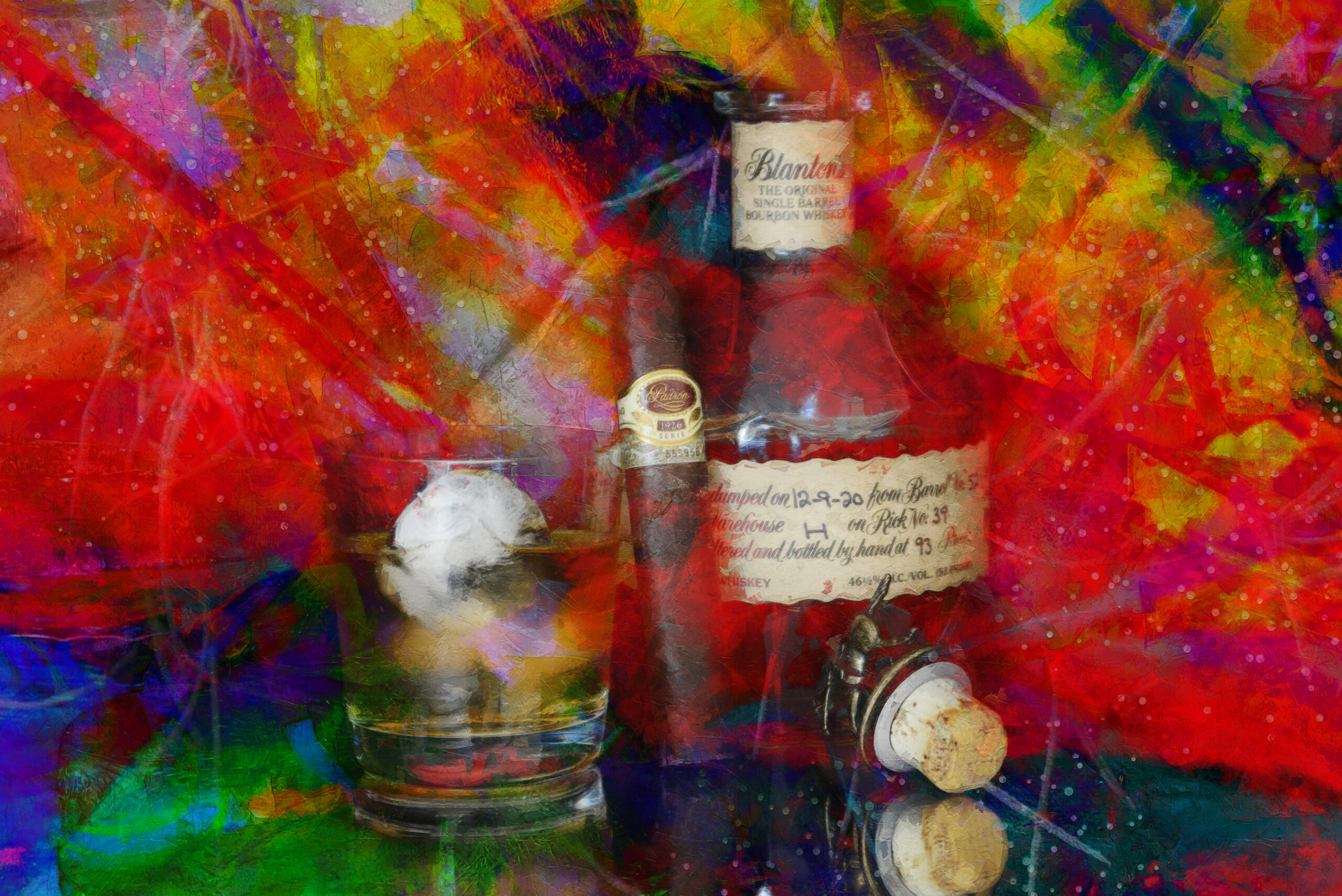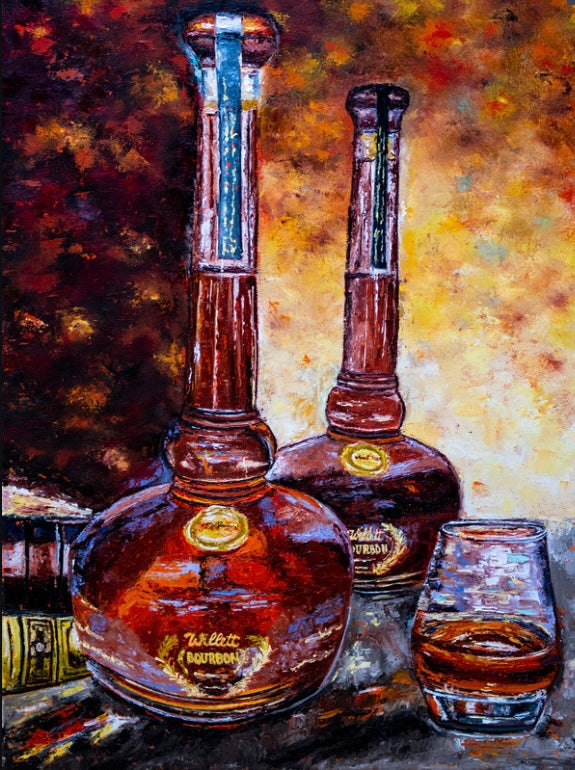Transform Your Room with Sensational Whiskey Art Inspired by Nature
Transform Your Room with Sensational Whiskey Art Inspired by Nature
Blog Article
The Value of Whiskey Art in Celebrating Heritage and Workmanship in the Beverage Industry
The elaborate relationship in between scotch art and the celebration of heritage and workmanship within the beverage sector can not be overstated. Via attentively designed tags and bottles, bourbon brand names encapsulate their historic roots and the artisanal abilities that define their manufacturing methods.
The Historic Roots of Whiskey
At the heart of whiskey's appeal lies an abundant tapestry of historical origins that trace back to old civilizations. The beginnings of bourbon can be linked to the purification practices of the Sumerians and Babylonians around 2000 BCE, where very early forms of fermented grain beverages started to emerge. Nonetheless, it was in the Middle Ages that the art of purification developed dramatically, particularly in Ireland and Scotland, bring about the creation of scotch as we know it today.
The term "whiskey" itself originates from the Gaelic word "uisce beatha," suggesting "water of life." This phrase underscores the cultural value of whiskey in Celtic societies, where it was typically related to rituals, celebrations, and common bonding. By the 15th century, purification came to be a recognized craft within monastic neighborhoods, leading the way for the facility of lawful distilleries.
As profession routes expanded, scotch's popularity expanded, going beyond local borders and recording the interest of connoisseurs worldwide. Whiskey Art. This historical journey shows not only the craftsmanship behind scotch manufacturing however likewise its important duty in social and social contexts, noting it as a substantial drink throughout history
Artistic Expression in Branding
Scotch branding stands as an engaging crossway of artistry and commerce, where visual identity plays an important function fit consumer perception. The aesthetic appeals of scotch labels, packaging, and marketing products mirror not just the brand's story but additionally its core worths and heritage. With creative expression, distilleries convey a narrative that reverberates with customers, evoking emotions and sparking links.
The use of shade, typography, and imagery in branding offers to differentiate items in a saturated market. As an example, traditional concepts may stimulate a sense of credibility and craftsmanship, while modern styles can represent advancement and forward-thinking. This strategic creative instructions improves brand name recognition and commitment, allowing consumers to build a personal partnership with the whiskey they select.
Moreover, creative expression in branding often works as a party of regional heritage. Distilleries often include local signs or historic references right into their layouts, creating a sense of area that invites consumers to engage in a more comprehensive cultural experience. Eventually, the virtuosity behind whiskey branding not only improves aesthetic allure but likewise enhances the total narrative of the brand, promoting a much deeper admiration for the workmanship and heritage embedded in each bottle.
Craftsmanship in Bottle Style
The virtuosity evident in whiskey branding prolongs beyond visual identification to incorporate the workmanship entailed in bottle design. Each bottle functions as a vessel not just for the spirit within, however likewise for the story it informs regarding its practice, top quality, and beginning. The style procedure needs careful interest to detail, as elements such as shape, product, and closure contribute considerably to the overall perception of the bourbon.
Workmanship in container style involves selecting high-grade glass that can enhance the bourbon's shade and clarity, while additionally giving a responsive experience for the customer. The silhouette of the bottle have to be both aesthetically enticing and practical, typically reflecting the heritage of the brand name. Lots of distilleries go with distinct forms or embossed logos that stimulate a sense of authenticity and background.
Furthermore, the tag style and typography play an important role in connecting the brand's story. Limited Edition. A well-crafted bottle not just captivates the customer's eye however additionally strengthens the brand's dedication to quality and practice. By doing this, the workmanship of bottle layout ends up being an essential element visit this page of the bourbon experience, merging virtuosity with a profound regard for heritage
Cultural Relevance of Whiskey Art
Commemorating tradition and craftsmanship, the social importance of bourbon art transcends simple aesthetics, linking with the social and historical stories of the areas from which it stems. Each bottle serves as a canvas, showing the unique tales, mythology, and traditions that have formed neighborhood whiskey-making practices. The complex designs typically mirror the heritage of the distillers, incorporating symbols and themes that reverberate with the society and values of their neighborhoods.

Additionally, bourbon art plays an important duty in communal celebrations and celebrations, offering as a tangible web link in between people and their shared experiences. By valuing the artistry helpful site in scotch product packaging, consumers grow a deeper understanding and respect for the craft, inevitably enriching their pleasure of the drink itself.
Modern Trends in Scotch Discussion
In recent times, the presentation of scotch has actually developed to mirror modern tastes and patterns while still recognizing traditional craftsmanship - Realism Art. Distilleries are increasingly focusing on visual components that enhance the general alcohol consumption experience, linking the gap between heritage and modernity
Ingenious container layouts have emerged, commonly including sustainable materials and artistic labels that inform engaging tales. Several brands now collaborate with regional artists, instilling their items with special visual expressions that resonate with customers. In addition, limited-edition launches are frequently packaged in collectible containers, including value and charm for lovers.

Final Thought
In conclusion, whiskey art works as an essential conduit for revealing the heritage and workmanship inherent in the beverage sector. With detailed branding, innovative bottle styles, and culturally substantial creative components, bourbon brand names effectively honor their customs and link with customers. This click this imaginative story not just elevates the gratitude of scotch however likewise enhances area identification and satisfaction amongst manufacturers. Inevitably, bourbon art plays an essential role in preserving and celebrating the rich cultural tapestry of whiskey-making.


Craftsmanship in bottle layout entails choosing top notch glass that can improve the whiskey's shade and quality, while likewise offering a tactile experience for the customer. In this method, the craftsmanship of container layout ends up being an important facet of the bourbon experience, merging artistry with an extensive respect for heritage.
In conclusion, bourbon art serves as a vital avenue for revealing the heritage and craftsmanship integral in the beverage industry.
Report this page